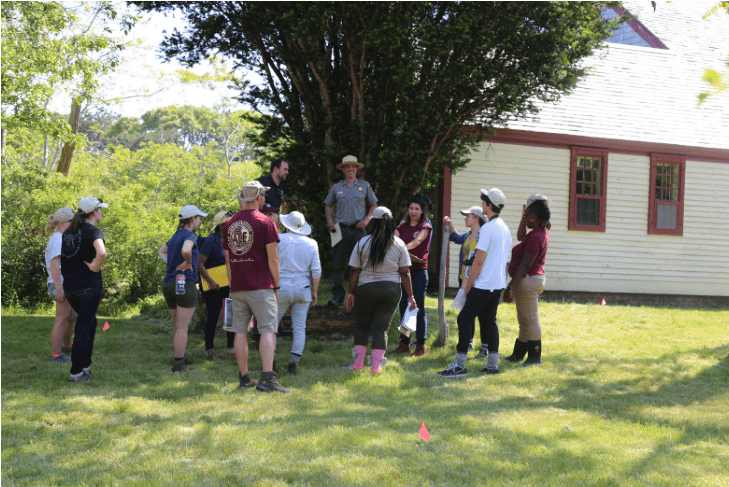DIRT IS DIRT IS DIRT IS DIRT: A LOVE STORY ABOUT ARCHAEOLOGY AND LANDSCAPE ARCHITECTURE
When people ask what I’m doing for the Olmsted Center over the summer, I often get a quizzical look followed by a pausing, halting question “but… don’t you do… archaeology?” Yes. Yes. I do.
Although landscape architecture is a completely different field, it overlaps with archaeology in so many ways. Landscape architecture and archaeology both set out to understand the deep relationships that human beings have with their environments. Across time and space, we are drawn to manipulate, incorporate and design our surroundings. From the Mounds of Cahokia to the lawns of Central Park, the U.S. offers a host of different human altered landscapes to explore. Landscape architecture and archaeology use clues embedded in the landscape to tell human stories.
Before coming here, I sat in the Florida Museum of Natural History’s Historical Archaeology lab, attempting to create a map from a mission site that had been dug in the 1970’s. Many of the coordinates were slightly off and the map making itself was something with which I had little experience. Three weeks later, I had cobbled together something resembling a map in Adobe Illustrator. I was very proud of my map, despite it being… humble (it was not very good). Four months later, I am sitting in the Olmsted office. Once again trying to cobble together a map, this time in AutoCAD. One workshop and several confused weeks later, I am becoming slightly more proficient.
For such different fields, the questions we ask and the goals we pursue are resoundingly similar. Using landscapes to tease secrets from the land, landscape architecture and archaeology use visual and geospatial data to better understand our histories and our futures. Sitting here, putting together these maps, I could definitely be doing archaeology. Both fields embrace humanity and seek out untold stories, and most importantly: both fields include a healthy dose of dirt.
